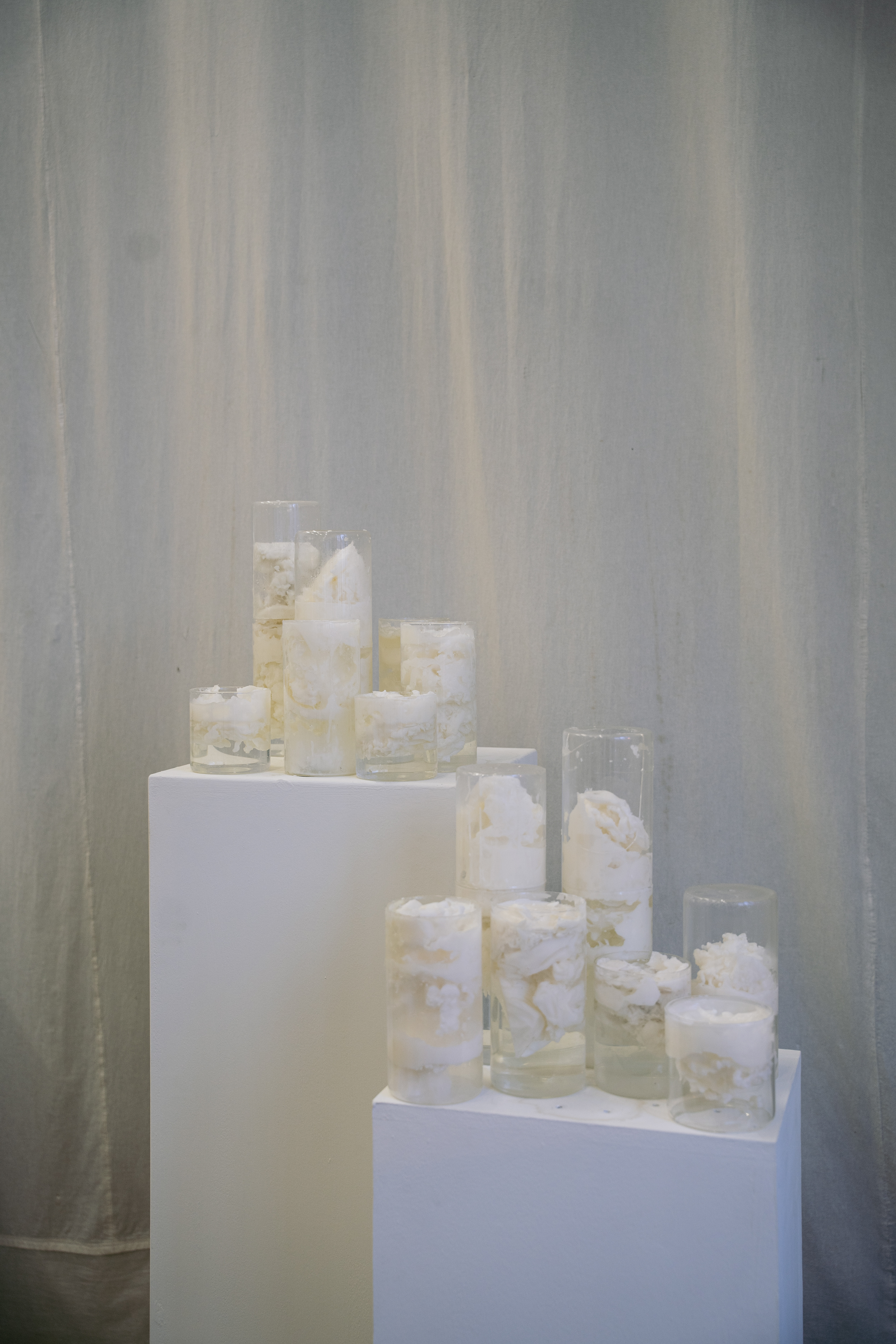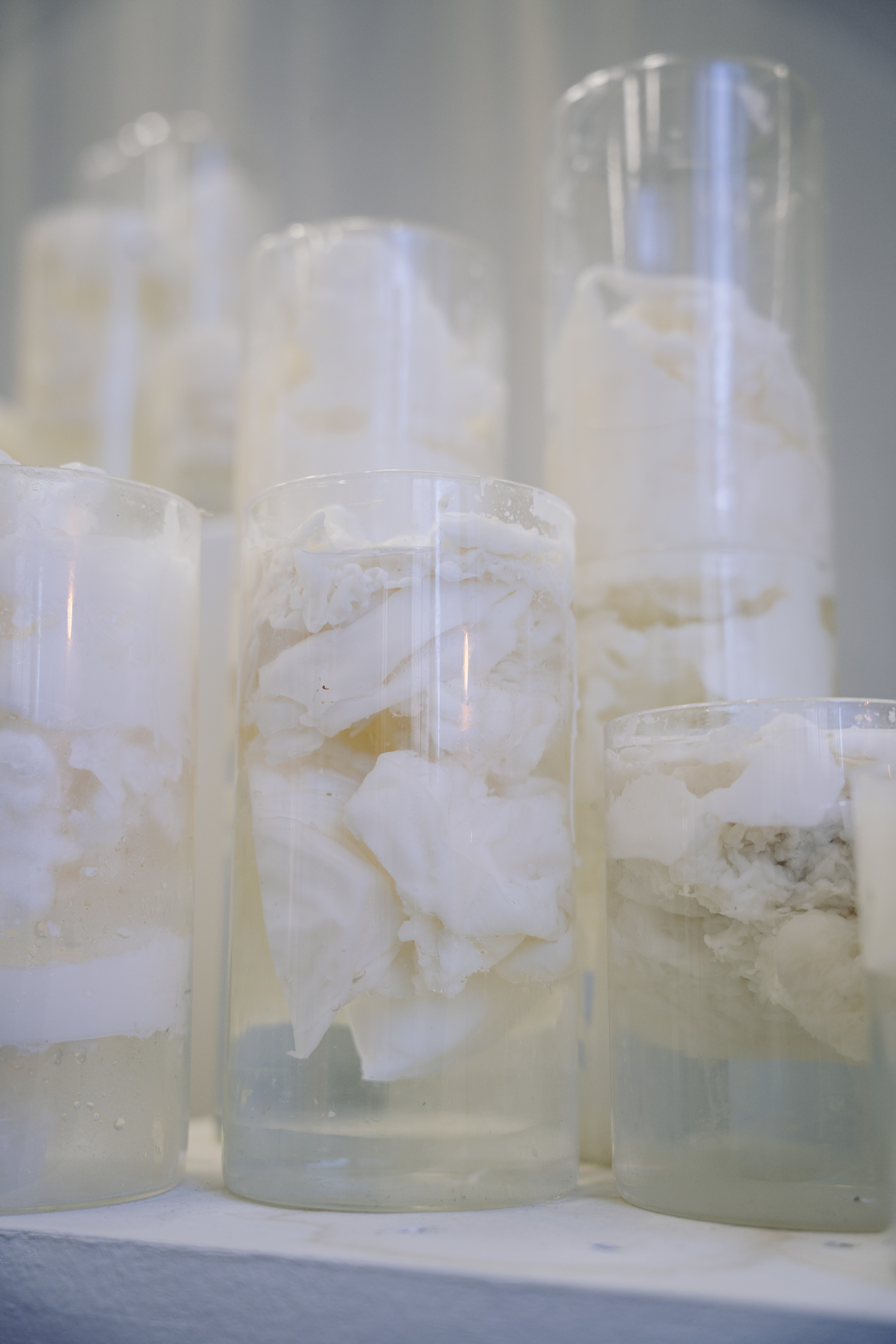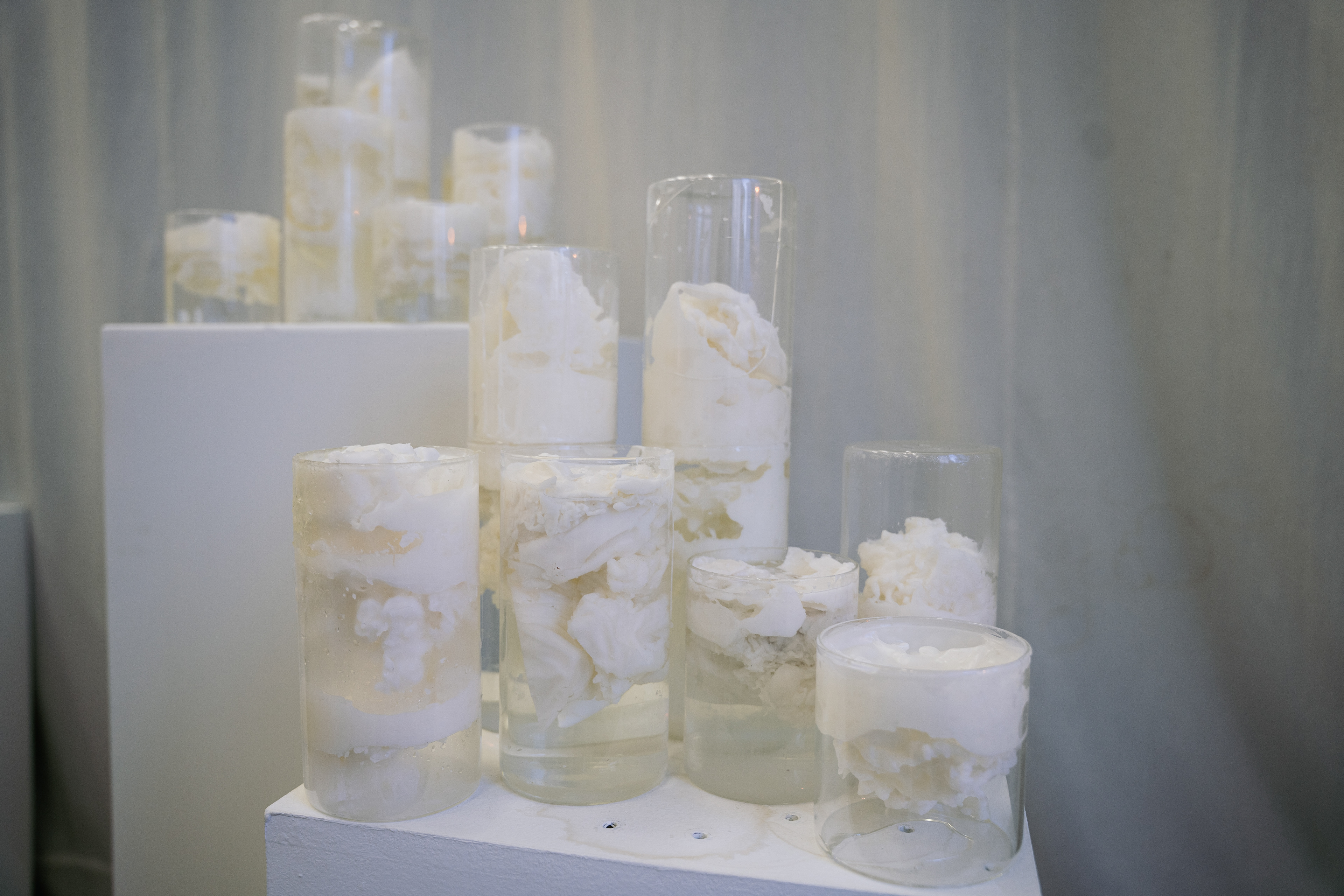I have taken 3000 pills is an autobiographical, multi-media work confronting the long-term experience of chronic illness, medication dependency, and pharmaceutical toxicity. The project unfolds in three interwoven formats: a text-based zine, a series of cyanotype prints, and a central wax sculpture—each acting as a site of accumulation, memory, and residue.
The zine serves as a fragmented essay on the daily ritual of taking medication, the psychological erosion of living by the clock, and the alienation of the medicated body. Written in a tone that blends clinical precision with personal vulnerability, it explores the quiet violence of being "maintained" rather than healed, and the impossibility of articulating invisible pain.
The cyanotypes—created using expired pill blister packs and prescription documents—capture the chemical after-image of life under constant treatment. Each print is a ghostly record, a botanical blueprint of pharmaceuticals as invasive species within the body. Their deep blues mirror both medical coldness and oceanic vastness, suggesting the unknown depths of internal suffering and resilience.
The wax sculpture—a partial body fragment encasing empty pill containers—is fragile, scentless, and sterile. It references both preservation and decay. Wax, like the body, responds to temperature, time, and handling. It softens, warps, melts. The sculpture resists permanence; it is deliberately unstable, echoing the precarious state of living chronically ill in systems not built to care.
This project is not about cure. It is about the slow, cumulative effect of survival. I have taken 3000 pills is a record, a mourning, and a quiet protest. It treats the sick body not as a failure, but as a site of complexity, endurance, and strange, defiant beauty.


